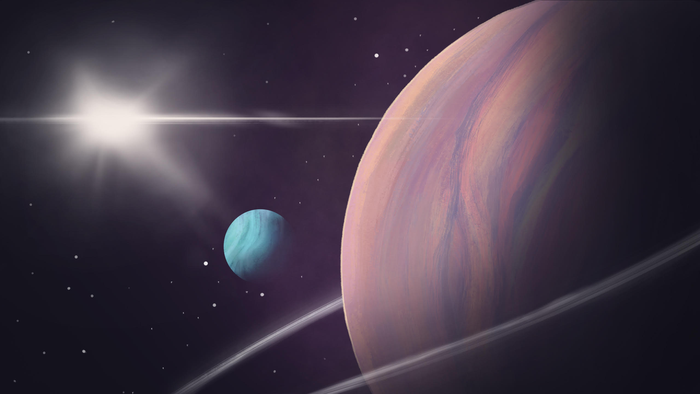Astronomers find supermoon outside of our solar system

Your support helps us to tell the story
From reproductive rights to climate change to Big Tech, The Independent is on the ground when the story is developing. Whether it's investigating the financials of Elon Musk's pro-Trump PAC or producing our latest documentary, 'The A Word', which shines a light on the American women fighting for reproductive rights, we know how important it is to parse out the facts from the messaging.
At such a critical moment in US history, we need reporters on the ground. Your donation allows us to keep sending journalists to speak to both sides of the story.
The Independent is trusted by Americans across the entire political spectrum. And unlike many other quality news outlets, we choose not to lock Americans out of our reporting and analysis with paywalls. We believe quality journalism should be available to everyone, paid for by those who can afford it.
Your support makes all the difference.Scientists think they have seen evidence of a huge moon orbiting a planet beyond our solar system.
Despite spotting more than 10,000 exoplanets, or worlds beyond our solar system, no conclusive proof of a moon around any of those planets have ever been found. In the new study, researchers believe they have found a candidate for such a discovery.
If it is confirmed, the newly discovered supermoon, which orbits around a Jupiter-sized planet, would be the first ever “exomoon” ever to be found. But it might not be confirmed for some time.
Indeed, the new discovery is the second possible exomoon to be found. The first candidate was spotted four years ago – but is still awaiting confirmation, and the same fate could befall the new candidate.
The discovery is described in a paper, ‘An Exomoon Survey of 70 Cool, Giant Exoplanets and the New Candidate Kepler-1708b-i’, published in Nature Astronomy.
The still mysterious moon is in orbit around Kepler 1708b, a planet that sits 5,500 light years from Earth. It is a little smaller than the previous candidate, which orbits around a similar planet, though they share many other characteristics.
Both of them are probably made of gas, the scientists predict. And they might have once been planets of their own, until they were pulled into the orbit of their even bigger worlds.
Both of them are also a long way from their star, which means they are less likely to be pulled out of orbit. Scientists expected that to be the case, given our own solar system’s giant and distant planets – Jupiter and Saturn – have many moons for the same reason, with 100 between them.
There are likely to be other, less extreme moons out there around distant worlds, which might look more like our own more serene and smaller moon. But they are by definition harder to see.
“The first detections in any survey will generally be the weirdos,” said David Kipping, who led the research on both the new and older exomoon candidates. “The big ones that are simply easiest to detect with our limited sensitivity.”
Join our commenting forum
Join thought-provoking conversations, follow other Independent readers and see their replies
Comments